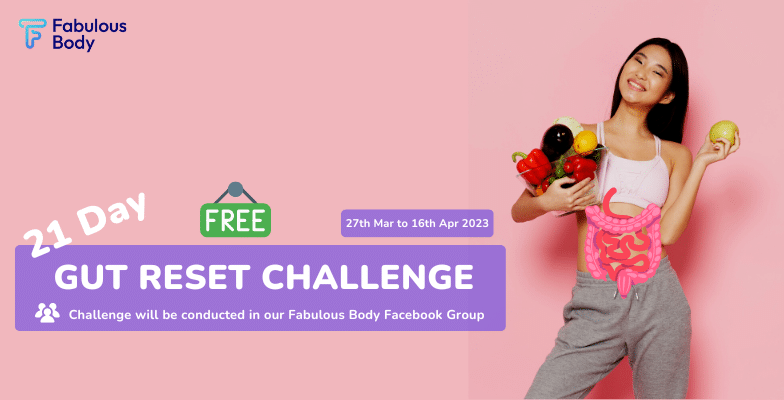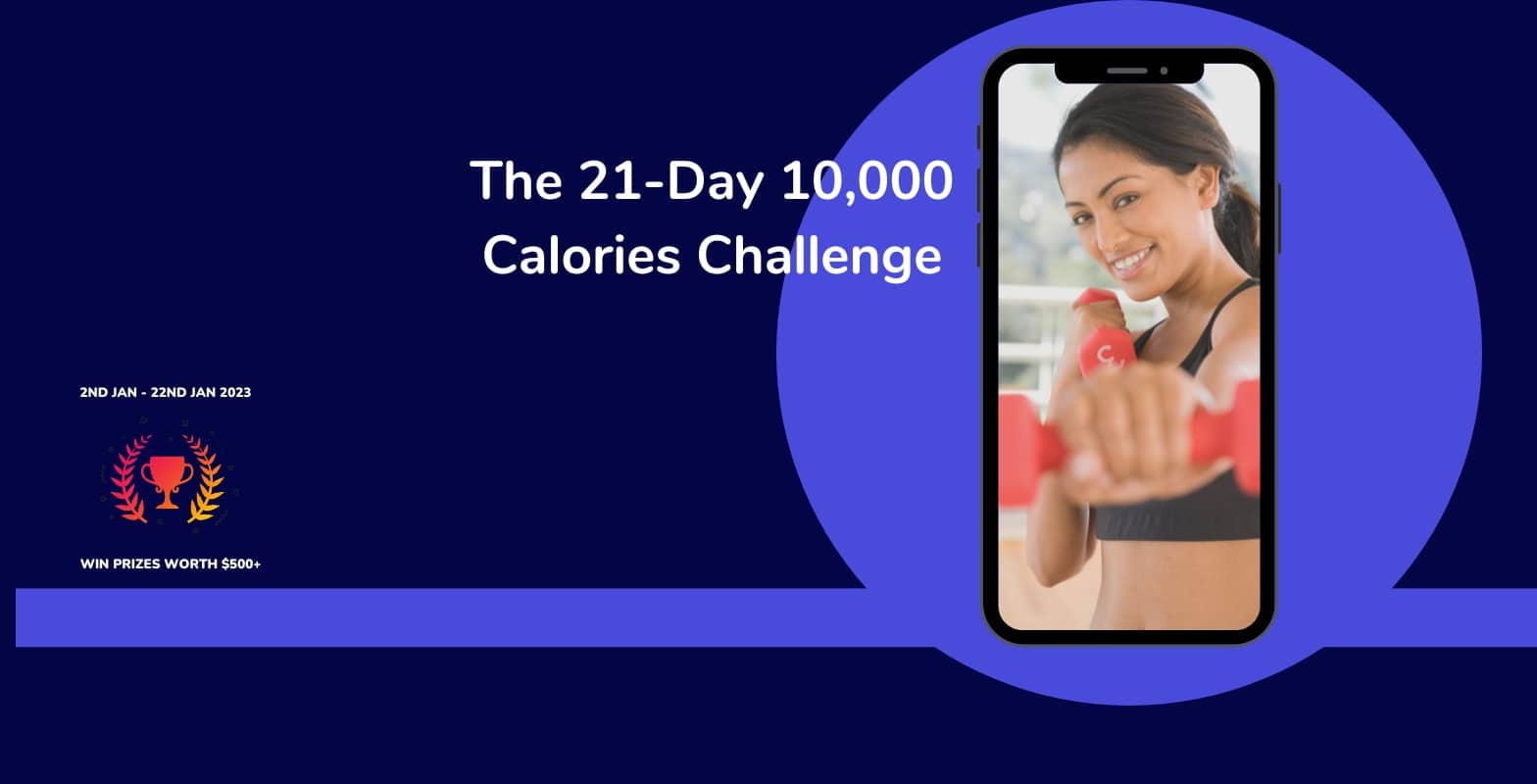How To Lose Fat In Five Simple Steps

The top reason for failure in any fat loss program is not knowing how much you want to lose and failing to set a proper deadline to reach this goal.
‘A goal without a deadline is merely a wish.’
Here Are Five Simple Steps You Can Take That Will Help You Lose Fat
1) Eat 10-20% Less Than Your Total Daily Energy Expenditure (TDEE)
Losing weight is a simple equation of calories in versus calories out. Here is the easiest way to understand energy balance.
Energy Balance = Energy Intake – Energy Expenditure
Energy intake encompasses everything you put into your mouth. Energy expenditure comprises several factors, including resting metabolic rate (RMR) and caloric cost of the activity (TEA). Therefore, the balance of intake versus outtake is a critical starting point in weight gain or loss.
If you have a surplus of calories (i.e., positive energy balance) where the intake exceeds the expenditure, you gain weight.
If you have a deficit of calories (i.e., negative energy balance) where the intake is less than expenditure, you lose weight.
Simple enough? This is actually just a starting principle, but it’s an important one, nevertheless. The type of calories you consume is the next consideration. You need to make sure that the calories you eat come from food that is nutrient-dense rather than typical fast food.
Related: Fabulous Body TDEE Calculator
Your TDEE is the number of calories your body burns in 24 hours while sleeping, working, exercising, playing, and even digesting food.
TDEE = BMR + TEA.
Let’s briefly discuss each of these measurements.
Basal Metabolic Rate (BMR)
This is the number of calories you burn at rest (lying down, watching TV, or working on your laptop). These calories are required for your brain to function and your heart to beat. Most people’s BMR is about 60 to 75 percent of their TDEE, depending on their activity levels.
Thermic Effect Of Activity (TEA)
The more you move and exercise, the higher your TEA. In addition, the more intense your training session, the more calories you burn overall. That’s why weight training burns more calories than a moderate-intensity cardio session.
Studies have shown that Excess Post-Exercise Oxygen Consumption (EPOC) following a period of intense resistance training elevates the metabolism for as long as 24 hours following the training session.
There are various formulas for estimating your TDEE. Let’s look at the two most popular ones.
The Katch-McArdle Equation:
BMR = 370 + (9.79759519 x Lean Mass in pounds)
The Mifflin-St Jeor Equation:
Male BMR = 10 × weight (kg) + 6.25 × height(cm) – 5 × age + 5
Female BMR = 10 × weight (kg)+ 6.25 × height(cm) – 5 × age – 161
Once you have determined your BMR, you need to multiply it by the appropriate activity factor to determine your daily caloric needs.
1.200 = sedentary (little or no exercise)
1.375 = light activity (light exercise /sports 1-3 days /week)
1.550 = moderate activity (moderate exercise /sports 3-5 days /week)
1.725 = very active (hard exercise /sports 6-7 days /week)
1.900 = extra active (very hard exercise /sports and physical job)
If you’re having trouble deciding between two activity factors, choose the lower one to be on the safe side.
Caloric Deficit Guidelines
15% Below Maintenance
This is a conservative deficit and a slow way to lose fat. However, if there are no deadlines and you need to retain maximum lean muscle mass, this is the best estimate.
20% Below Maintenance
This is a moderate deficit for people who have above-average body fat levels.
25% below Maintenance
This is an aggressive plan to lose fat and can be used for a short period of time for people who have significant body fat stores.
How To Calculate The Energy In?
One excellent approach to good nutrition is creating a food diary to keep track of the food items you eat on a daily basis. Having an approximate idea of how many calories you are ingesting can be a huge help in reaching your goal.
Buy a food scale and weigh your food before you eat it. You can find the caloric content of food pretty easily by googling it; this will give you a clear idea of how many calories you’re eating. Most people are surprised to see just how few different foods they actually consume on a daily basis.
For example, for the past five years, whole eggs have been a staple breakfast for me at least five times a week. Add nuts, a portion of meat, dairy products (milk, yogurt), and some fruits, and that’s almost 80% of my calorie intake for the day. My total ingredient list contains no more than 20 items!
Should I Eat The Same Food Every Day?
In addition to measuring your food, another important approach is eating mindfully and slowly (Fabulous Body Law no 4). It takes around 15 minutes for your body to inform your brain that you are full, so be sure to wait at least that long before deciding if you want a second helping.
If you tend to have a second serving when the food is delicious (as I often do), use a smaller plate and ensure you don’t overload it the first time. Find what works for you and do it!
Related Article: Should I Eat The Same Food Every Day?
2) Eat A Moderate Amount Of Protein In Your Diet
RDA guidelines (0.8g/kg) do not reflect the requirements of hard training individuals who want to increase muscle mass. Numerous studies show these requirements to be approximately double that of the RDA, so you should adjust it to at least 1.6-1.8g/kg for active individuals. Anything above 2g/kg would be categorized as high protein.
Related Article: How Much Protein Should I Eat Per Day?
3) Perform Weight Training 2-3 Times A Week
Weight training builds muscles, and building muscles burn more fat. We know muscles are catabolically more active tissues than fat, which means they need more energy to exist. So if one gains 10 lbs of muscle, they will burn 50-70 calories more per day without moving (roughly).
Isn’t that awesome? Besides, weight training has an EPOC effect and can boost your metabolism for 16-24 hours (sometimes even more, depending on the intensity of your workouts). This added advantage of elevated metabolism results in more calorie burns without doing anything! 1https://pubmed.ncbi.nlm.nih.gov/11882927/
Related Article: 6 Awesome Benefits Of Working Out 3 Times A Week Using Fabulous Body (FBX) Workout Routines
4) Perform HIIT 3-5 Times A Week
Besides weight training a few times a week, including a few sessions of HIIT to burn more fat. This ensures a well-rounded functional body as well. Read more.
Related Article: HIIT Or Steady State Cardio?
5) Get Enough Sleep
Not getting enough sleep triggers hormonal changes that lead to an increase in appetite. Sleep deprivation will cause your body to crave foods high in sugar. In addition, you won’t have enough energy for your workouts, and your strength will suffer.
Be sure to get at least 7-8 hours of sleep daily. One strategy that really works wonders for me is taking a power nap. Depending on the quality and quantity of my sleep at night, I take a power nap for 20-30 minutes at least once or twice a day.
Related Articles:
How To Lose Belly Fat [2-3] Inches In Less Than 21 Days | A Step-By-Step Guide | Part-1
How To Lose Belly Fat [2-3] Inches In Less Than 21 Days | A Step-By-Step Guide | Part-2
These were the core principles that will help you melt fat with ease. Now I’d like to mention seven guidelines that can give your fat-burning process a real boost, but the aforementioned core principles should take precedence.
1) Drink Green Tea
Green tea contains antioxidants such as EGCG (epigallocatechin gallate), catechins, and caffeine. In addition to boosting your metabolism, it’s also extremely healthy. 2https://healthambition.com/health-benefits-green-tea/
2) Drink More Water
Water burns fat. Period. After consulting thousands of clients, I’ve found that roughly seven out of every ten people don’t drink enough water. Print out and paste the following statement, which you can see daily.
Water Is The Most Important Nutrient for The Body
More than 70% of your body is water. Without water, your metabolism slows down, and you burn fewer calories. It’s easy to tell if you’re not getting enough water: the darker the color of your urine, the more dehydrated you are.
3) Carry Food With You
Some of you who travel for work probably find yourselves complaining about missing meals. Believe me, I’ve been there, and I understand completely. I travel a lot for work, and I am here to tell you that it’s possible to stay on track while on the road.
If you check my travel bag at any given time, you’ll find nuts (almonds and walnuts), protein powder, a banana, and an apple. This is enough for me to get through the entire day and then eat a sumptuous dinner to end the day. Does this kind of eating style work? Find out about my intermittent fasting routine.
Related Article: Intermittent Fasting: The Definitive Guide
4) Clear Your Kitchen
If your kitchen is stocked with chocolates, donuts, and other items heavy on refined sugar, you’ll probably end up snacking on them, even if you would have promised yourself that you wouldn’t.
Just a few hundred extra calories can build up to a lot at the end of the week and can make the difference between being a success or being a failure. Ensure you stock your fridge and kitchen with fruits, veggies, nuts, and other healthy items. Throw away the junk. This can make a huge difference.
5) Write Everything Down
This has two key benefits, it becomes a guide that you can refer to about what to eat and when, and it can help you plan your grocery shopping ahead of time, so you don’t miss out on any ingredients while cooking your favorite healthy recipes.
6) Cheat, But Do It Correctly
We eat roughly 21 meals a week. Depending on how aggressive your fat loss goal is, I recommend giving yourself 1-3 cheat meals per week. If you think you can avoid that cheesecake or your vanilla ice cream topped with chocolate sauce forever, think again.
Related Article: How To Lose Body Fat | How Much Can You Lose In A Month?
I cheat quite regularly because it helps me stick to my weight loss plan much better. I feel slightly guilty when I have a beer or a dessert, but I promise I will eat clean over the next few days. I usually overcompensated by working harder in the gym and eating clean for the next few days.
Consider The Flip Side-If you think you can eat perfectly clean every meal daily throughout your weight loss journey, you could end up completely giving up on your plan or bingeing like there is no tomorrow. It’s like standing at the cliff’s edge and thinking that gravity won’t pull you down.
7) If You Fail To Plan, You Plan To Fail
Planning your meals ahead of time is essential if you want to implement healthy eating habits. I advocate a very practical approach that entails eating just 2-3 meals a day as opposed to five or six smaller meals. You would have to visit your grocery store twice a week.
Or hundreds of online grocers can deliver anything you want right to your doorstep. So if you can’t find any eggs in your fridge in the morning, it’s because of poor planning on your part. Don’t be surprised if you end up eating pancakes and waffles as a result.
Related Article: Belly Fat Diet | Indian Diet Plans
What do you think about losing fat? Have any questions? Let me know in the comments below!

Skill-Based Education.
Global Recognition.
Powerful Community Building
Secure a certificate of completion in as little as a day by graduating from one of our free courses.
Get Access to Our Free Courses. No Credit Card Required.

Fabulous Body Membership
Your All-Access Pass to A Fabulous Body & A Rewarding Career
25+ Certificate Courses & Programs, All Included
15 Day Free Trial, 100% Money-Back Guarantee
About Akash Sehrawat
Akash is a creator of 25+ programs and certificate courses in which more than 200,000 students have enrolled both on Udemy and Fabulous Body's native platform. Akash is also an author of three books that can be found on Amazon. His answers on Quora have gathered more than 12 million views in less than a year.










